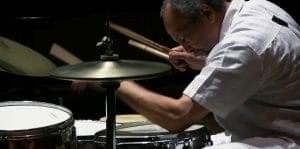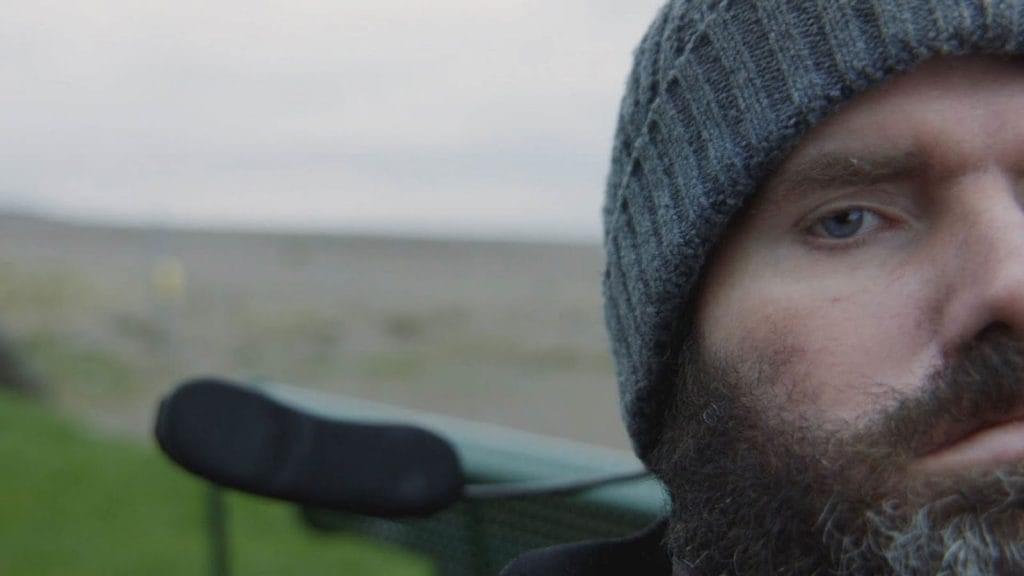
From bebop to swing to fusion, jazz musicians have been pushing the musical envelope since the art form’s beginnings in the late 19th Century. Of all its guises, avant-garde jazz (aka free jazz) is possibly the most enigmatic genre. To the untrained ear, performances by these musical provocateurs can seem like a cacophony of discordant noise and chaos – but there is a method to the madness. Jake Meginsky and Neil Young’s new documentary Milford Graves: Full Mantis is a deeply poetic exploration of percussionist Milford Graves. Bobbing and weaving between the metaphysical and physical, the past and the present, the film is a challenging narrative that rewards the patient viewer with insight into the creative, improvisational process of its visionary protagonist who is regarded as one of the fathers of form.

“…Graves practicing ya’ra, ‘the black way of self protection’…”
With its long opening that pans over a collection of instruments, African masks, and other ephemera, Milford Graves: Full Mantis makes it clear from the outset that this film isn’t going to be your usual documentary affair. The viewer is introduced to Marcus Graves, an older yet lithe African African, as he works in the lush garden that he has cultivated around his home in South Jamaica, Queens. Embellished as it is with mosaics and sculptures, the house itself is a work of art. Circumambulating his garden, Graves explains the cosmic energy contained within plants and, along the way, unspools bits and pieces of the story of his life.
As he does so, the filmmakers shift back in time to lo-fi black and white footage of Graves whaling away on his drum kit; then to Graves practicing ya’ra, “the black way of self protection” (from whence the term “mantis” — a movement practiced by Graves — originates); then back to the present where Graves sits upon a raised dais and shares anecdotes including a humorous tale about how he narrowly escaped being brought up on gun possession charges and how he records his heartbeat and the heartbeat of all those who come to visit him for use in his soundscapes and compositions. Constructed like Japanese koan, the film will undoubtedly be a bit dizzying to many a viewer.

“…witness the power of music to transcend boundaries of culture, of ailment, and of language…”
The most moving part of the film occurs when a young Graves performs for an audience of autistic children in Japan. Paired with a dancer who whirls and twists to Graves shifting time signatures, the children begin getting up and dancing themselves. The sheer joy, the release, the freedom that these kids experience as they move to the beat of Graves drums is a beautiful sight, indeed. And at that moment, we witness the power of music to transcend boundaries of culture, of ailment, and of language — even if just for just a little while.
Upon reflection, Meginsky and Young — who apparently shot for nearly fifteen years — have created an abstract work of art that will surely polarize movie audiences just as the canvases of Mark Rothko and Jackson Pollack did the art world. What is in indisputable is that Milford Graves is a true American original who continues to live and create art on his own terms. Such clarity of vision and bravery of spirit is something all can appreciate and aspire to.

Milford Graves: Full Mantis (2018) Directed by Jake Meginsky and Neil Young. Featuring Milford Graves
7 out of 10 stars

